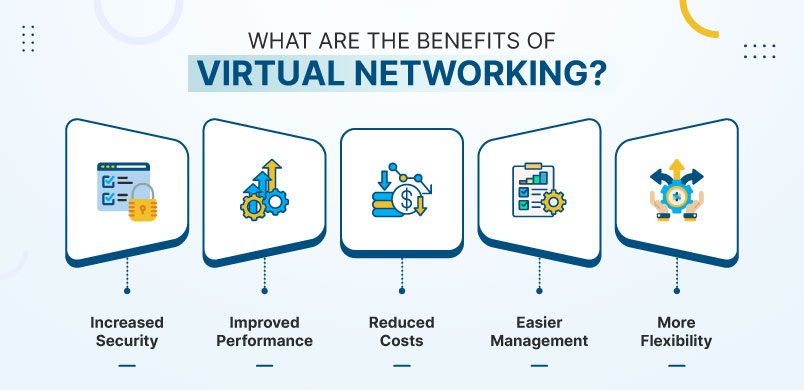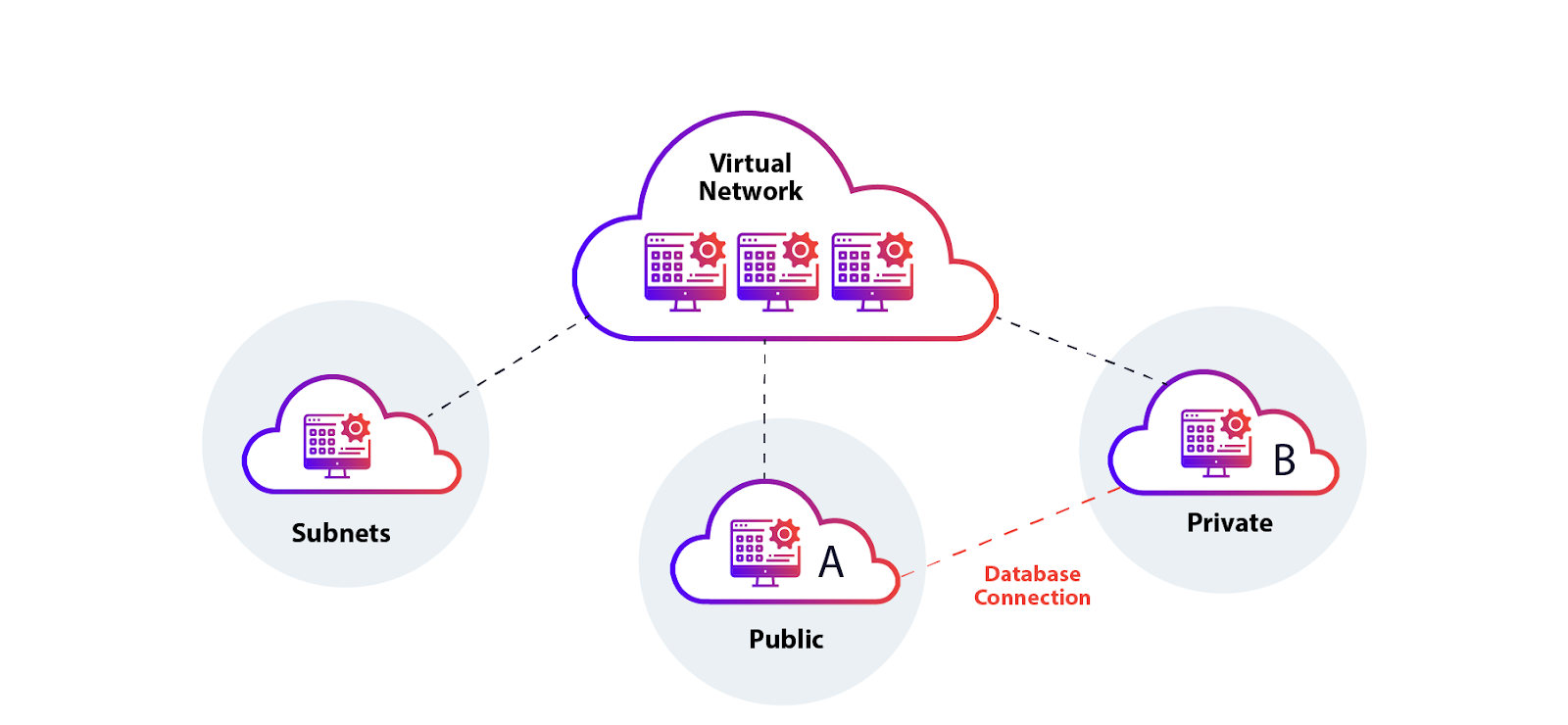Migration from Physical to Virtual Network: A Strategic Guide
Virtual networking technology’s popularity in the wireless industry is slow, as is the move toward digital transmission in the network.
While this is a matter of cost, Market Time, and Reducing The Need To Create A Promising Service, migrating to virtual networks is not without problems.
This article tells the story of a selection of mobile network operators who have virtualized part of their physical infrastructure, with all the benefits and problems.
Migration From Physical To Virtual Network
- Guaranteed user-level contract or SLA
- Results related to product integration
- The risk of increasing the cost of ownership when VNF managers are dependent on the owner
- A variety of services
Advantages
- Reduce costs by using COT (Commercial Off-The-Shelf) products
- There is no need to increase network capacity or plan to reduce redundancy
- Reduce the time required to launch/enter the market
Network virtualization by migrating from traditional networks to the fifth generation of networks: ZTE
According to existing industry theories, 2020 is the starting point for the commercial development of fifth-generation 5G networks. In addition to increasing bandwidth, 5G provides more reliability and less latency (URLLC) and machine communication (MTC) to support the IoT. The fifth-generation network connects many people and objects, which was a problem for the demand of previous-generation networks.
Introducing virtualization technology is the key to solving this problem. Virtualization technology has been used extensively in the IT industry for many years. Introducing virtualization will reduce ownership costs, achieve business innovation, and help prepare 5G networks.
Operators must move their networks to a cloud-based architecture to ensure their infrastructure is ready to support new services. Operators will travel to 5G with different architectures and technologies.
Need to migrate from a traditional network to a network ready for 5G
Virtualization technology uses a hardware repository to share these hardware resources by activating network elements. This has a significant impact on maximizing resource utilization and reducing costs. Cloud-based NFV networks such as OpenStack and VMware understand the integration of information technology and communication technology.
Based on big data and artificial intelligence networks, tasks such as automating operations and maintenance, reducing execution performance, and reducing maintenance costs are performed.
NFV and SDN virtualization lead to rapid network development, customer service agility, and on-demand personalization. Virtualization will give organizations and operators great opportunities. It also makes managing and moving from traditional communication service providers (CSPs) to digital service providers (DSPs) more efficient.
5G network is more attractive because it allows for multiple applications, while providing such a variety of applications on traditional networks is difficult.
Fifth-generation networks focus on operators’ business futures and set standards to meet their needs. Virtualization and cloud technology have enabled the network to provide new and innovative services.
Basic concepts in network migration
- Start now. Virtualization applications have matured in the communications industry. Large operators have started commercial development on a large scale, including the core network, such as vIMS, vEPC, VCs, vSDM, and virtualized messaging systems.
- Three-step analysis: A reference model for NFV has been developed based on ETSI, so those principles and rules can complement the work of researching and developing common frameworks. The reference framework is generalizable and extensive, from basic design to configuration, and can control network traffic. The reference architecture comprises hardware, resource management, OS, and network performance layers. With the wave of NFV change, active communications operators have embarked on new technologies. However, they must be meticulous not to fall into the trap of companies’ products (i.e., their development is independent of a particular company’s products).
- 5G is ready: All investments should align with the expansion of fifth-generation networks. This targeted investment has another advantage: operators can compete to upgrade their networks to 5 G.
- Information technology and communication technology are converging. The short-term goal of network migration is 5G, and the long-term goal is the convergence of information and communication technology.
Technical basics of network virtualization
These technologies will be created or made in the network. They are provided for the success of technologies in the IT industry, but some of them need the advancement of the telecommunication industry to be more adaptable. Unlike traditional IT applications, there are many specific applications in the telecommunications industry, such as packet forwarding and audio and video decoding.
In the past, this was done using proprietary DSP and NP hardware. With the advent of DPDK, AVX, and other technologies, especially significant advances in processors, remote applications have reached the same power, or even better, than proprietary hardware. This feature was provided for applications to establish server storage, storage disk capabilities, and OpenFlow.
Cloud computing is fundamental in information technology because it is an effective technology on a large scale.
However, the main requirements of telecommunications are reliability, large-scale network maintenance, and real-time, which are expected to progress further in the current cloud technology. NFVI is suitable for operators to ensure sufficient security and reliability. Of course, a private cloud that integrates information and communication technology will be more efficient than a shared cloud in the long run.
NFV is the migration of remote devices from dedicated platforms to x86 servers. In these networks, all devices are developed on private platforms. All network elements are in one box, and the hardware can not be shared.
Every device needs extra hardware to increase capacity, but it will be idle when not used to the maximum. So, this method is time-consuming, inflexible, and costly. With NFV, network elements are standalone applications compatible with standard servers, storage devices, and switches.
SDN, or software-centric network, separates network control operators from forwarding operators and changes network management. Under these conditions, network routing becomes easier, flexibility increases, and dynamism increases.
There is another concept in networking called slicing.
This work aims to divide the network into smaller parts, and we will learn about its advantages in the following section. This allows for easy configuration and reusability of network components. Each minor has its own needs that differ from those of others. With this in mind, many think of network slicing in a 5G architecture. This technology allows operators to split virtual, multiple end-to-end networks into one software infrastructure.
Each network is logically isolated into devices, access, transmission, and core networks. Executive resources such as bandwidth, service quality, and security are guaranteed for each part.
Another factor increasing the tendency to use slicing in 5G is the isolation of each part. If an error or defect occurs, it only becomes problematic in that part and does not affect others.
Microservices are based on the concept of solidarity.
Microservices communicate with each other via an API or a defined message bus. Information about user access and sessions is all stored on the data-sharing layer. Although each microservice is in a different location, each can obtain the latest user status via the data layer.
Container virtualization technology has provided high performance and scalability compared to traditional virtual machines. This technology grew rapidly and entered the IT industry.
In cloud application architecture, application components must be deployed on containers. This results in resource utilization, faster service response, and better maintenance of agile applications.
FAQ
What are the main reasons for migrating from a physical to a virtual network?
Virtual networks help consolidate hardware, reduce cost, increase flexibility, enable faster deployment of services, and support modern architectures (like cloud, NFV, SDN) more effectively.
What are the critical steps in migrating to a virtual network?
Key steps include: doing a thorough assessment of existing physical network, planning the virtual design, setting up parallel infrastructure for testing, performing staged migration or cut-over, and validating performance post-migration.
What major challenges should I expect during this kind of migration?
Challenges include ensuring service availability and SLAs during migration, managing multiple vendor integrations, avoiding vendor lock-in, achieving desired performance in virtualized environment, and retraining operations teams.


